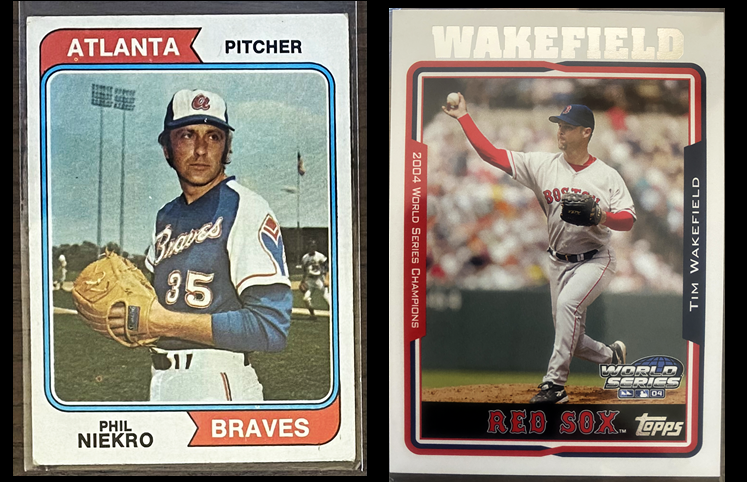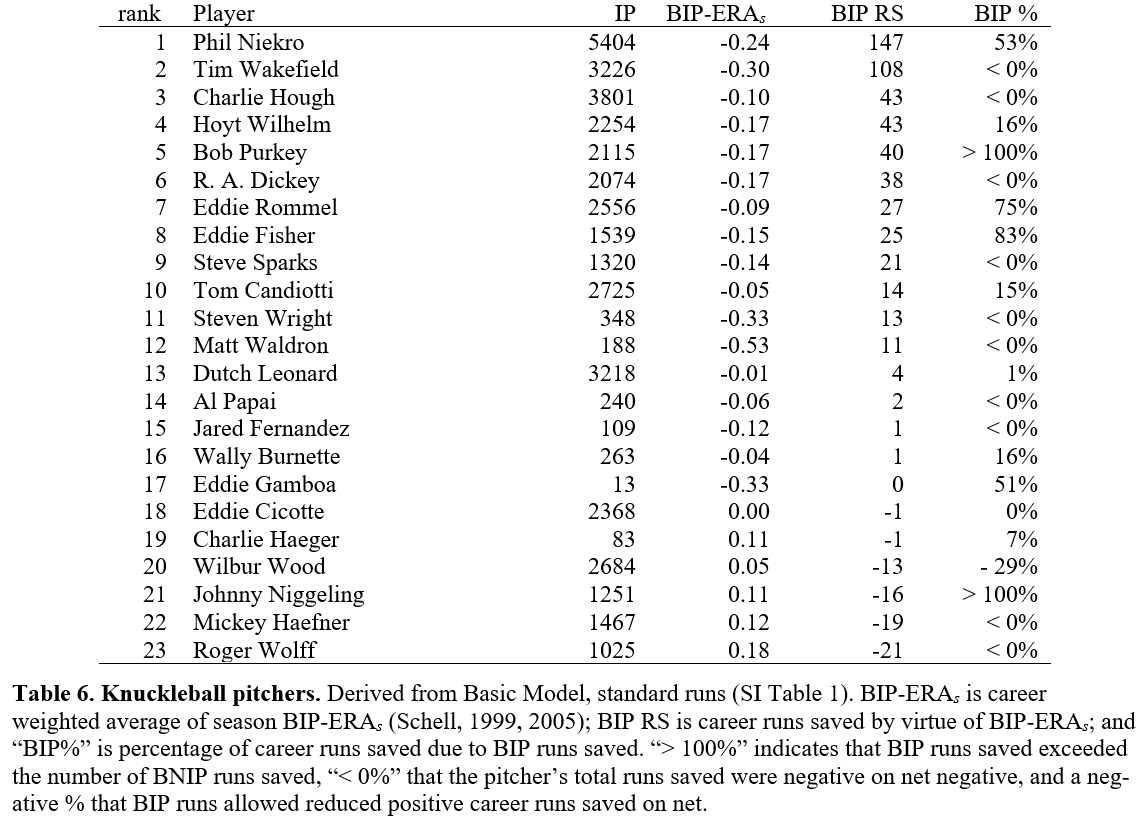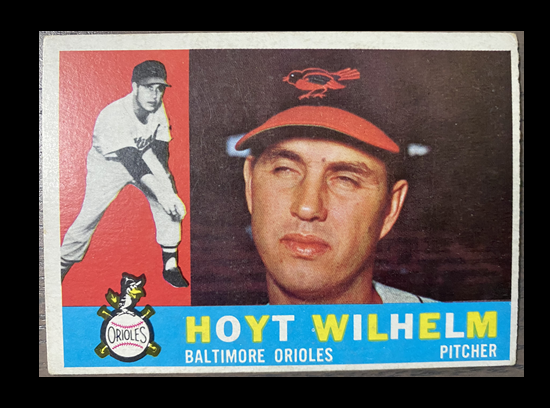 It’s kind of embarrassing to re-cover ground previously examined but the previous examining occurred with a much less advanced instrument for measuring the impact of pitchers’ “ball in play” (BIP) propensities. As all 48,973 of you know BIP propensities consist of pitchers’ individual impact on the fieldability of the batted balls they yield.
It’s kind of embarrassing to re-cover ground previously examined but the previous examining occurred with a much less advanced instrument for measuring the impact of pitchers’ “ball in play” (BIP) propensities. As all 48,973 of you know BIP propensities consist of pitchers’ individual impact on the fieldability of the batted balls they yield.
Knuckleballers are thought to have superior BIP propensities. Do they?
Below is a list of the “BIP career runs saved”—runs allowed below average due to BIP propensities—of pitchers known to have relied principally on the knuckleball (BIP-ERAs is the estimated number of runs above-average that a pitcher allows per 9 IP by virtue of his BIP propensities; the “s” denotes “standard runs,” a statistical device for putting runs allowed over all AL/NL seasons since 1912 on a common scale).

So Wakefield and Niekro are for sure pitchers who succeeded on account of their ability to suppress BIP runs. Indeed, in Wakefield’s case, the BIP-runs model estimates that BIP runs saved partially offset an above-average number of runs allowed on the basis of non-BIP propensities—i.e., ones relating the ability of a pitcher to avoid batter contact altogether.
After that, it is kind of a mixed bag. Charlie Hough saved runs with his BIP propensities—but not a lot. Hoyt Wilhelm did, too, but not as many as you might think.
Some other famous knuckleballers apparently succeeded despite not because of their BIP propensities. Wilbur Wood, one of the greatest knuckleball pitchers of all time, is in that camp: his total career runs saved was diminished by virtue of his inferior capacity to stifle quality contact.
It’s possible to be more systematic. I ran a logistic regression analysis and concluded that knuckleball pitchers were about 7 percentage points more likely to record a season BIP-ERAs at or above the 90th percentile and 14 percentage points more to record a season BIP-ERAs at or above the 75th than a non-knuckleball pitcher.
That’s impressive—but given the small number of such pitchers over time, the result is likely being driven entirely by Wakefield and Niekro.
So all of this is something to reflect on. What do you make of it?


One Response